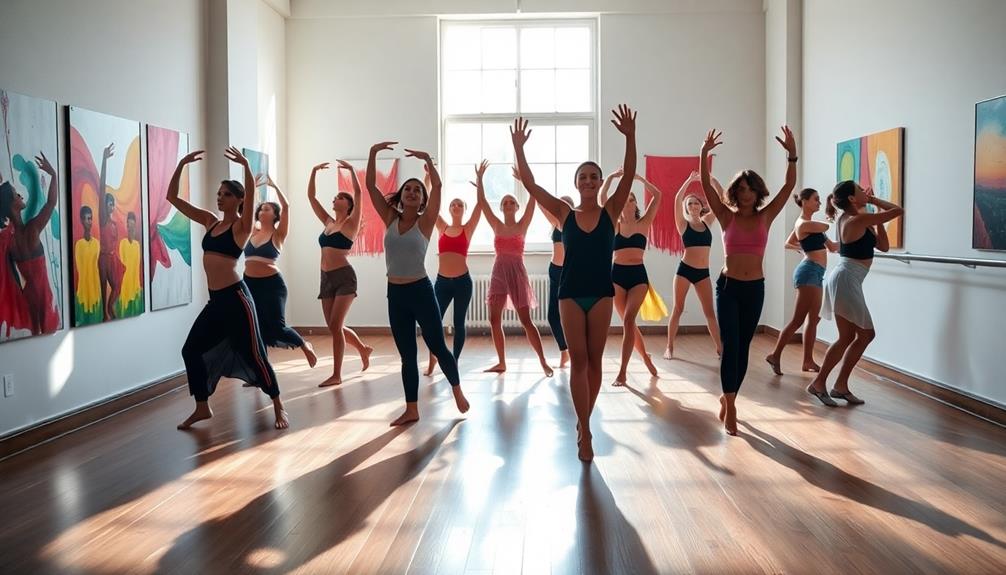When you delve into the world of dance, you will discover themes that resonate deeply within you. Dance serves as a reflection of cultural identity and helps to preserve traditions through movement. It serves as a powerful tool for expressing emotions that may be difficult to articulate through words alone. Additionally, dance serves as a platform for addressing societal issues, such as gender roles and inequalities. In today’s digital age, technology has brought new dimensions to the art of dance, making it more accessible and interactive. The misconceptions surrounding dance education demonstrate that everyone has the ability to participate, which can enhance creativity and foster self-confidence. Each theme adds a layer of complexity; keep exploring to uncover how these elements seamlessly weave together in the beautiful form of dance.
Key Takeaways
- Dance embodies cultural significance, reflecting traditions and customs that preserve heritage and connect generations.
- Emotional expression through movement allows dancers to convey feelings that words cannot, creating deep connections with audiences.
- Dance serves as a powerful social commentary, critiquing societal norms and addressing issues like inequality and representation.
- Technology enhances dance experiences, fostering global collaboration and making education more accessible through online platforms and virtual reality.
- Misconceptions about dance education limit participation; it promotes discipline, creativity, and emotional well-being for individuals of all backgrounds and skill levels.
Cultural Significance of Dance
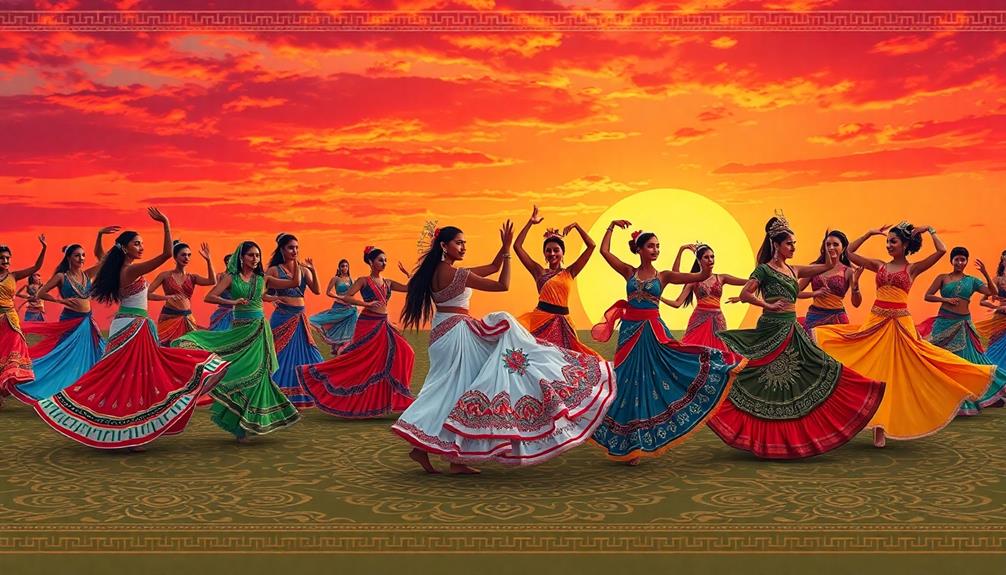
Dance is a vibrant tapestry that weaves together the threads of tradition and cultural identity. When you engage in dance, you're not just moving your body; you're participating in a rich history that reflects the values and beliefs of your community.
Each step tells a story, embodying customs and rituals passed down through generations. As you explore various cultural dances, you'll discover how they connect you to your ancestors, preserving the essence of your heritage. The rhythmic movements and vibrant costumes not only entertain but also serve as a living archive of history and identity. From intricate footwork to symbolic hand gestures, these dances offer a glimpse into the heart of a community’s beliefs and traditions. For instance, when planning an event that honors such rich cultural heritage, you might seek out Indonesian wedding decoration ideas, blending the vibrant, sacred elements of the past with modern celebration styles, creating an unforgettable experience that connects past and present. These celebrations become more than just performances; they are vibrant expressions of cultural continuity and pride. By incorporating **Indonesian wedding decoration ideas**, you ensure the aesthetic details also reflect the deep-rooted traditions, using intricate patterns, symbolic colors, and meaningful motifs to enhance the authenticity of the event. Whether through the placement of ceremonial objects or the choice of specific fabrics, such **Indonesian wedding decoration ideas** create a harmonious atmosphere where every element tells part of the larger story of heritage.
The costumes, movements, and music all serve as documentation of cultural evolution, allowing you to appreciate the diverse expressions of human society. By immersing yourself in this art form, you enrich your understanding of the world and celebrate the shared experiences that unite us all.
Emotional Expression Through Movement
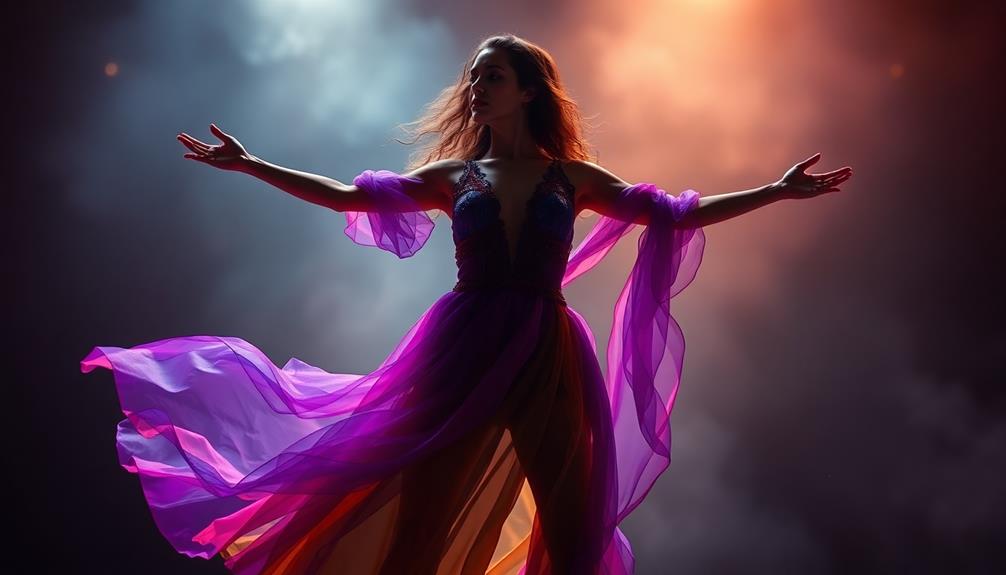
When you move to the rhythm, you're not just showcasing technique; you're sharing a piece of your soul. Each gesture, each sway, tells your story and connects you with the audience on a profound level.
Your body becomes an instrument of emotional expression, allowing you to communicate feelings that words often fail to convey.
Here are three powerful ways to evoke emotion through your dance:
- Facial Expressions: Let your face reflect the emotions you're portraying; it draws the audience in.
- Dynamic Movement: Varying your intensity creates a rollercoaster of feelings, keeping the audience engaged.
- Personal Storytelling: Infuse your personal experiences into your dance; it makes your performance authentic and relatable.
Embrace this journey and let your movements resonate deeply.
Dance as Social Commentary
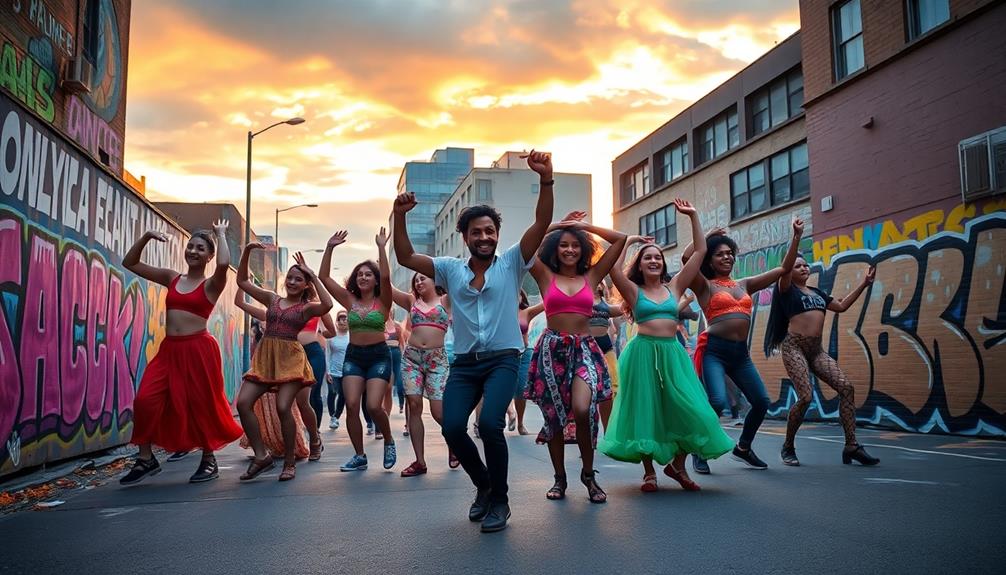
Through the expressive power of movement, you can also shine a light on pressing social issues and inspire change.
Dance serves as a powerful medium for political activism, allowing you to critique societal norms and address inequalities. Through your choreography, you can highlight class dynamics and gender roles, challenging the status quo and provoking thought.
Each movement becomes a statement, reflecting cultural evolution and the values of your community. By drawing from historical contexts, you enrich your dance with layers of meaning that transcend words.
Your performance can evoke empathy and engage audiences, prompting them to contemplate their own roles in societal issues. In this way, dance becomes not just art, but a call to action for change.
Technology's Influence on Dance
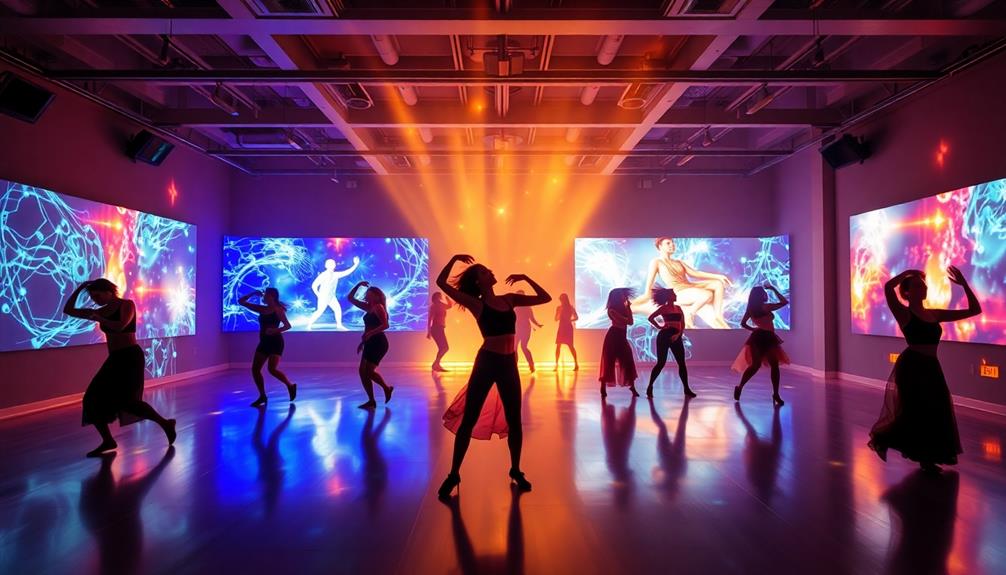
The influence of technology on dance has reshaped how you create, perform, and experience movement.
With innovations at your fingertips, you can explore new avenues of expression and connect with audiences like never before.
Here are three powerful impacts technology has on dance:
- Virtual Reality: You can immerse yourself in a 360-degree dance environment, feeling every beat and rhythm as if you're part of the performance.
- Online Classes: Learning from the comfort of your home, you can access world-class instruction, breaking down barriers to entry.
- Social Media: Sharing your dance journey instantly connects you with a global community, fostering inspiration and collaboration.
Embracing these tools can elevate your artistry and broaden your reach, making dance more inclusive and dynamic than ever.
Misconceptions About Dance Education
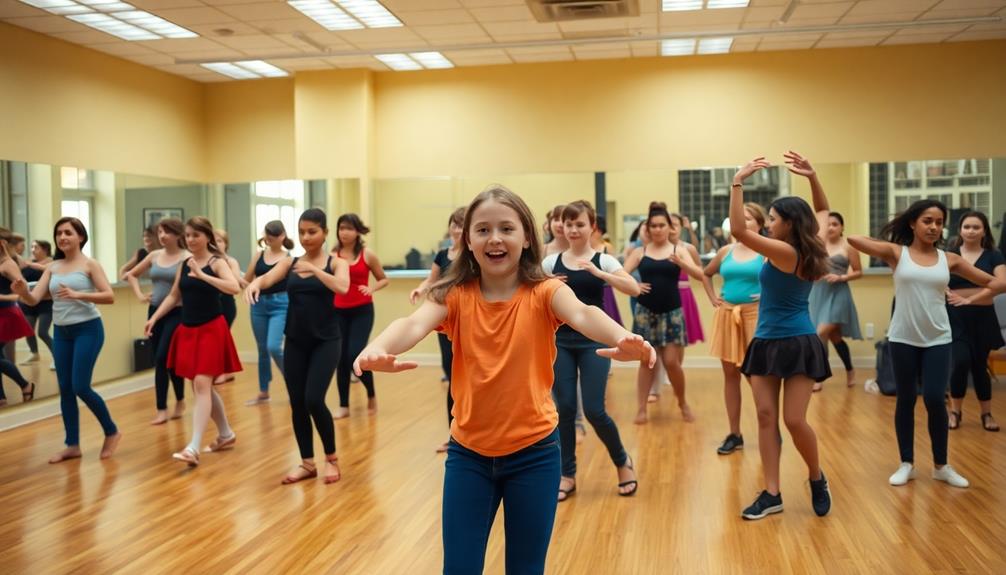
Many people think dance education is only for those with natural talent or a background in the arts. However, that misconception couldn't be further from the truth.
Dance education welcomes everyone, regardless of their prior experience. It fosters discipline, creativity, and physical fitness, making it beneficial for all individuals.
You'll discover that dance classes can boost your confidence and enhance your social skills, whether you're a beginner or someone with a few years under your belt.
Additionally, dance therapy illustrates that movement can support emotional well-being, reaching a diverse range of participants.
Ethical Issues in Dance
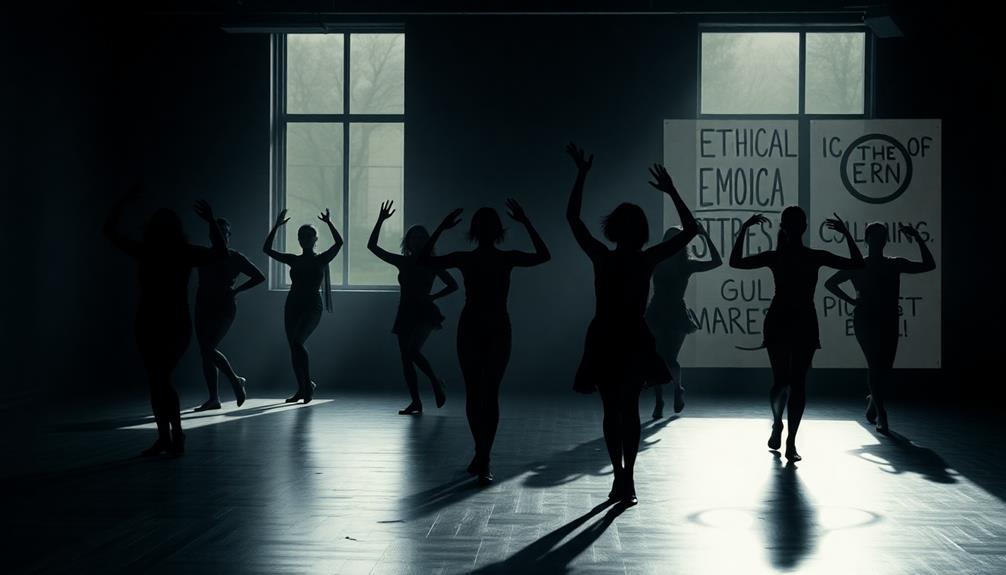
In today's dance landscape, ethical issues demand your attention, particularly when it comes to cultural appropriation and representation. You can't ignore the impact of how cultures are portrayed and shared in dance. Engaging with these themes helps foster respect and understanding within diverse communities.
Here are a few key considerations:
- Cultural Appropriation: Are you honoring the origins of the dances you perform, or are you exploiting them?
- Representation: Does your choreography reflect the voices and stories of the cultures you're engaging with?
- Inclusivity: Are you creating spaces where all dancers feel valued and respected, regardless of their background?
Dance in Educational Settings
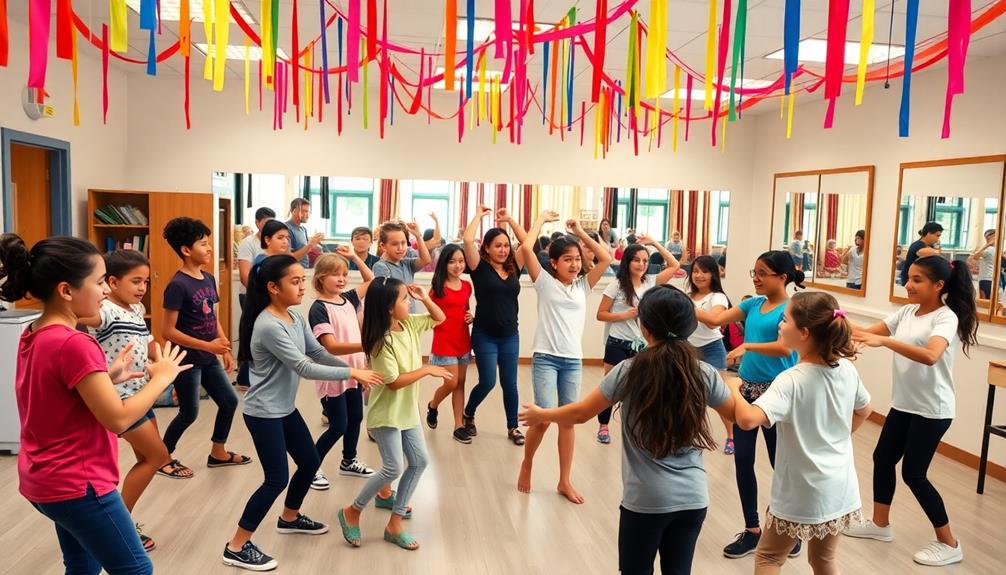
Regularly incorporating dance into educational settings can considerably enhance student engagement and creativity. By integrating movement into lessons, you spark curiosity and encourage active participation.
Dance helps you express emotions and ideas, fostering a deeper understanding of subjects like history and literature. It also nurtures teamwork and communication skills as you collaborate on choreography or group performances.
Moreover, dance promotes physical fitness and mental well-being, creating a balanced learning environment. You'll find that students who engage in dance often show improved focus and discipline.
Embracing dance in the classroom not only enriches the curriculum but also cultivates a vibrant culture of creativity and inclusivity, empowering every student to explore their unique voice through movement.
Frequently Asked Questions
How Can Dance Be Integrated Into Everyday Life?
You can integrate dance into your everyday life by incorporating movement during breaks, joining local classes, or dancing at home. It's a fun way to express yourself, relieve stress, and connect with others.
What Are the Health Benefits of Regular Dance Practice?
Dancing's like breathing life into your body; it boosts heart health, enhances flexibility, and lifts your mood. You'll find your strength and endurance growing, while stress melts away, leaving you invigorated and alive.
How Does Dance Influence Personal Relationships?
Dance deepens personal relationships by fostering connection and communication. You share experiences through movement, express emotions, and build trust. This shared activity creates lasting bonds, enhances empathy, and enriches your interactions with others.
Can Anyone Learn to Dance, Regardless of Age?
Absolutely, anyone can learn to dance, regardless of age! You'll discover that dance not only improves your coordination but also boosts your confidence, creating a joyful connection to movement that transcends generations. Just give it a try!
What Role Does Improvisation Play in Dance Performance?
Improvisation in dance performance lets you express spontaneity and creativity. It encourages you to connect with your body, explore emotions, and engage with the audience, making each performance unique and deeply personal.
Conclusion
In exploring the vibrant world of dance, you've discovered its rich cultural significance and emotional depth. Did you know that approximately 75% of adults believe that dance improves their mood? This highlights how movement isn't just an art form; it's a universal language that connects us all. As you continue your journey, remember that dance can inspire change, foster connections, and enrich lives in ways you might not have imagined. Embrace the rhythms and let them resonate within you!
